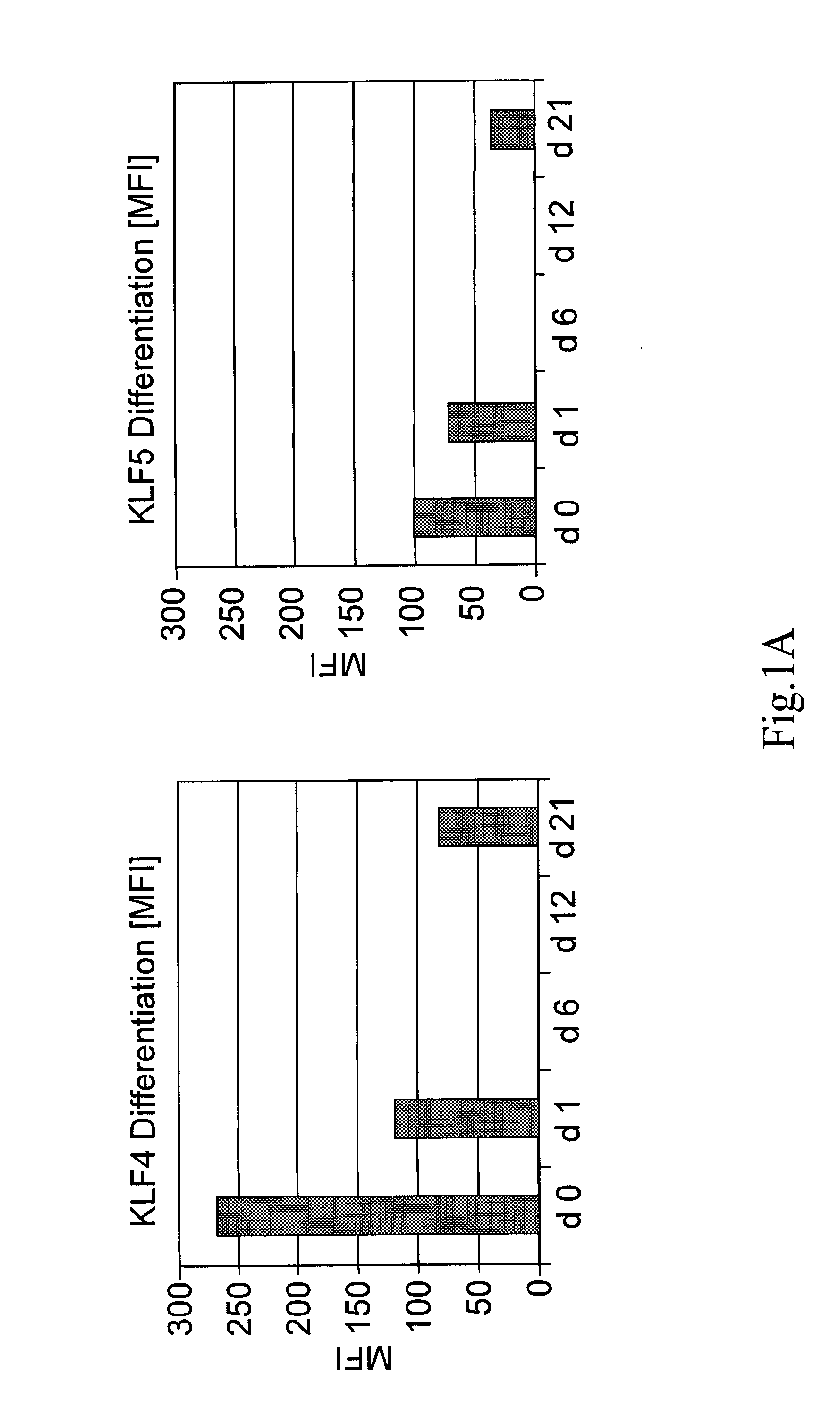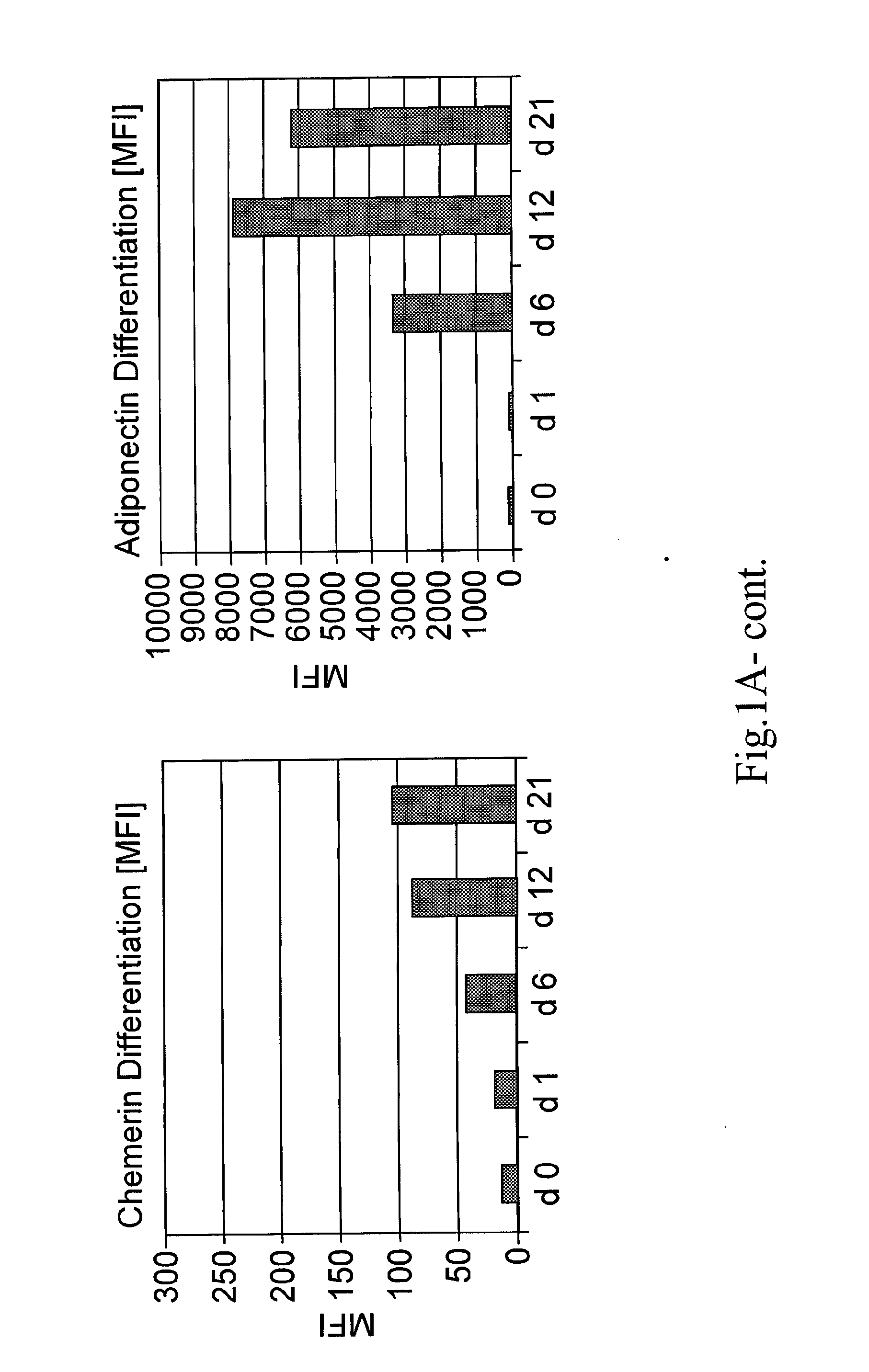Assays and monitoring paradigms for stem cell culture
a stem cell culture and monitoring paradigm technology, applied in the field of stem cell culture monitoring paradigms, can solve the problems of inability to consider current differentiation assays for monitoring and characterization applications, complex immunohistochemical characterization methods, time-consuming, weeks,
- Summary
- Abstract
- Description
- Claims
- Application Information
AI Technical Summary
Benefits of technology
Problems solved by technology
Method used
Image
Examples
Embodiment Construction
[0042]A description of example embodiments of the invention follows.
Monitoring Differentiation State of MSCs
[0043]The invention provides methods of monitoring the differentiation state of a mesenchymal stem cell (MSC) culture comprising measuring the expression level of one or more markers of adipogenesis, and / or one or more markers of osteogenesis, and / or one or more markers of chondrogenesis.
[0044]“Differentiation state” is the phenotype of an MSC that illustrates its ability to differentiate along different lineages, including, but not limited to, adipocyte, chondroblast, and osteoblast lineages. A “change in the differentiation state” of an MSC can be detected as a change in the expression level of one or more markers provided by the invention and can include, for example, increased or decreased expression level of an early marker of differentiation or increased expression of an intermediate or late marker of at least one of adipogenesis, chondrogenesis, or osteogenesis, as illu...
PUM
| Property | Measurement | Unit |
|---|---|---|
| Fraction | aaaaa | aaaaa |
| Fraction | aaaaa | aaaaa |
| Fraction | aaaaa | aaaaa |
Abstract
Description
Claims
Application Information
 Login to View More
Login to View More - R&D
- Intellectual Property
- Life Sciences
- Materials
- Tech Scout
- Unparalleled Data Quality
- Higher Quality Content
- 60% Fewer Hallucinations
Browse by: Latest US Patents, China's latest patents, Technical Efficacy Thesaurus, Application Domain, Technology Topic, Popular Technical Reports.
© 2025 PatSnap. All rights reserved.Legal|Privacy policy|Modern Slavery Act Transparency Statement|Sitemap|About US| Contact US: help@patsnap.com



